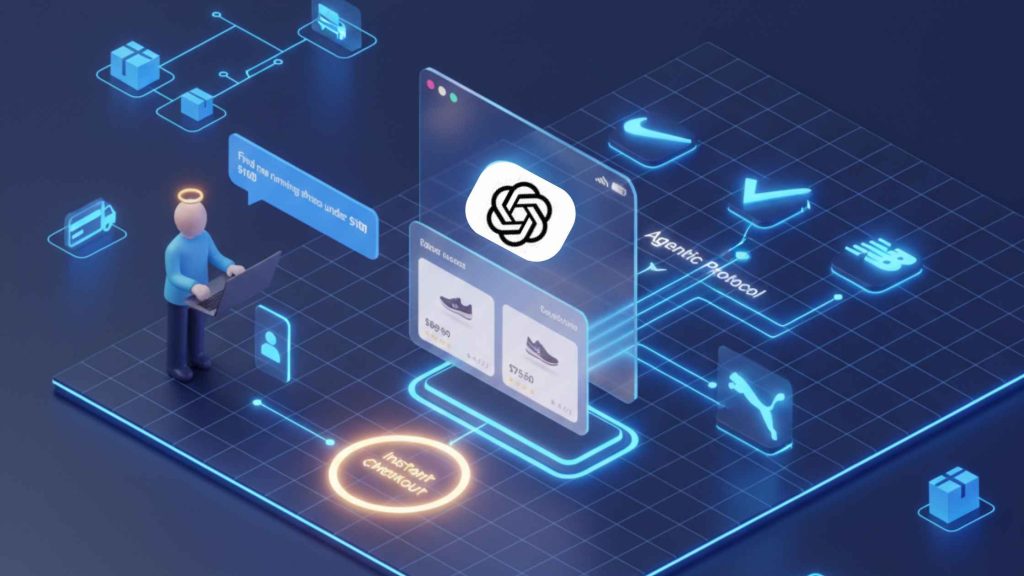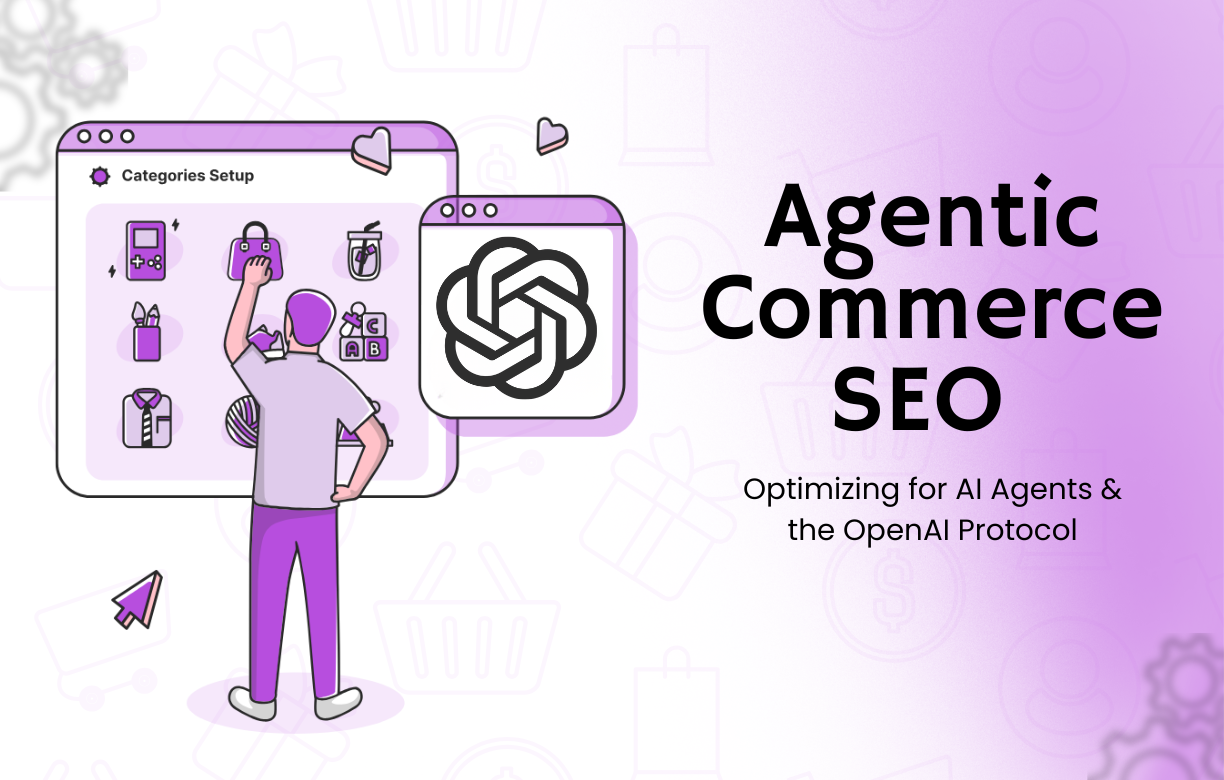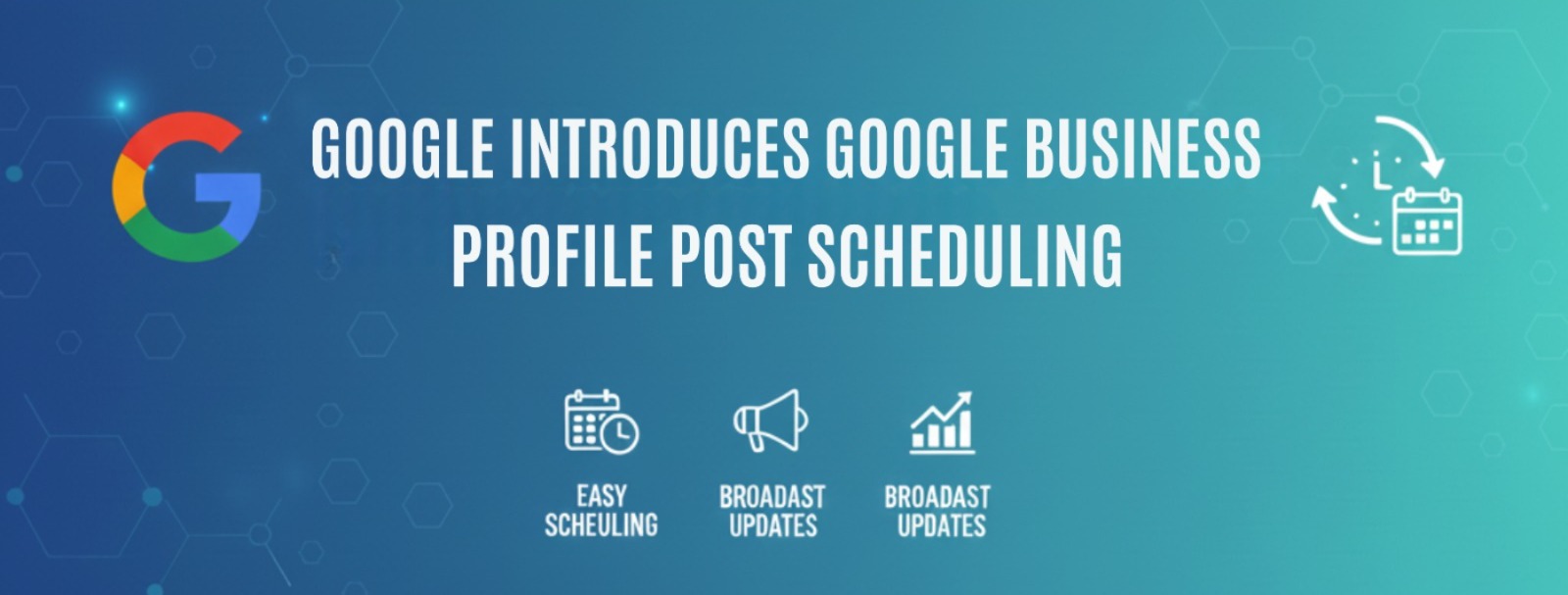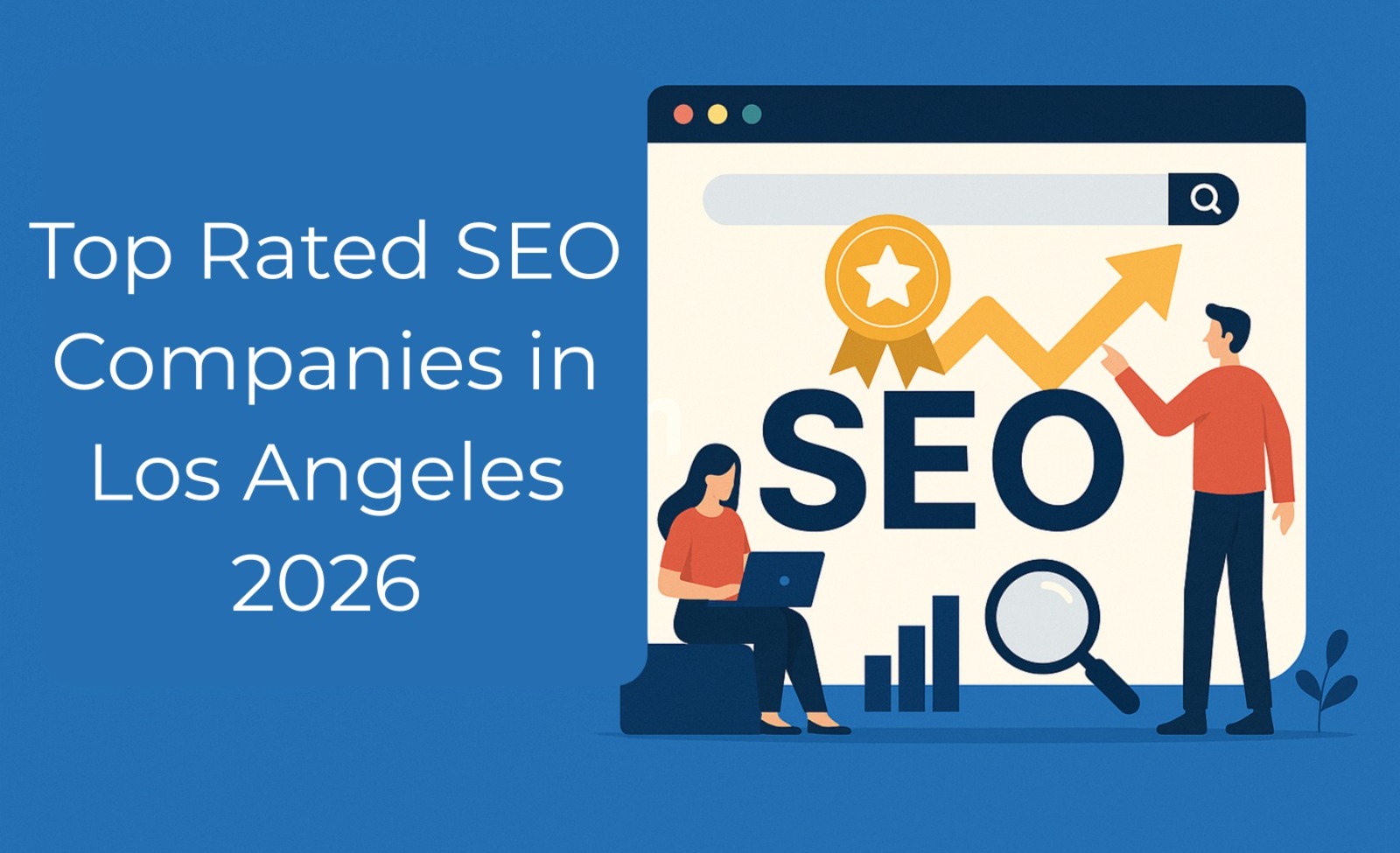Table of Contents
ToggleIntroduction
OpenAI is ushering in a new era: with its recently announced Agentic Commerce Protocol (ACP) and Instant Checkout feature, users can now buy directly inside ChatGPT. In other words, the chat interface isn’t just for conversation or information; it’s becoming a commerce frontier.
Why this matters: discovery, conversion, and transaction are merging into one seamless conversational layer. The classic funnel user visits the site, browses, adds to cart, checks out, and is being reframed. If AI agents can do the browsing, comparing, and checkout for users, merchants that are agentic-ready will gain a huge advantage.
In this blog post, you’ll learn:
- What agentic commerce and ACP are, and how instant checkout works
- Why existing SEO must evolve into Agentic SEO / AEO / GEO
- A step-by-step roadmap to optimize for agentic commerce
- Key risks, challenges, and timelines for adoption
- How an agency (or consultant) can help you prepare
Let’s dive in.
What Is Agentic Commerce?
Definition & Context
Agentic commerce refers to a paradigm where AI agents—autonomous, goal-oriented systems powered by language models—can act on behalf of users to discover, compare, and purchase products. In this model, the “agent” (e.g., ChatGPT) becomes the interface, removing or minimizing friction between discovery and checkout.
OpenAI’s Agentic Commerce Protocol (ACP) is an open standard that defines how AI agents, users, and merchants interact to complete commerce flows in a chat or conversational context.
In practical terms, ACP handles “agentic checkout” (i.e., the ability for an agent to complete purchases) plus product feed, delegated payments, order fulfillment, and integration to merchant systems.
How Instant Checkout (in ChatGPT) Works
OpenAI’s Instant Checkout is the first consumer-facing manifestation of agentic commerce. Here’s the simplified flow:

- Product Discovery in Chat: A user asks ChatGPT something like “find me a noise-canceling headphone under $300.”
- The agent (ChatGPT) fetches relevant product options (using merchant product feeds, catalogs)
- The user selects one option
- Agentic Checkout: Payment is completed within the chat (via Stripe, Apple Pay, Google Pay, or card input)
- Merchant receives order, fulfills it. The merchant retains control of inventory, fulfillment, and customer data.
At launch, the feature supports single-item purchases (i.e., no multi-cart) for U.S.-based ChatGPT users buying from Etsy sellers, with Shopify integration planned.
OpenAI built the protocol with Stripe, enabling merchants that already use Stripe to adopt agentic payments with minimal friction (in some cases, one line of code).
Also, the ACP is being open-sourced so that merchants, developers, and platforms can build their own integrations.
Implications for Merchants & SEO
From Traditional SEO to Agentic-Aware Discovery
In the traditional web, your SEO efforts aim to rank pages, get users to click, and convert. But in an agentic commerce world:
- Users may never see your site. Instead, AI agents may retrieve product data, descriptions, or images, then directly transact.
- Ranking is deeper than SERP rank: it’s about being prioritized by AI agents during their inference. That means your product, catalog, and metadata must be structured, agent-friendly, and exposed via APIs or feed protocols.
- Conversational context matters: agents may pick products based on conversational history, user preferences, long-term memory, or profile signals.
- You’ll need to optimize not just for keywords but for agent relevance signals: trust signals, fulfillment speed, price competitiveness, ratings, return policies, and integration compatibility.
In short, you need to shift from classic SEO to Agentic SEO / Agentic Optimization (AEO / GEO) — making your products, content, and infrastructure consumable, rankable, and actionable by AI agents.
Discovery → Agentic Checkout → Fulfillment
To thrive, merchants must lock in all three:
- Discoverability by agents (via structured product feeds, APIs, schema, metadata)
- Agentic Checkout readiness (ACP compliance, delegated payments, tokenization)
- Operational & fulfillment robustness (fast shipping, low return friction, inventory integrity)
If one leg is weak (e.g., poor delivery, frequent cancellations), agents will penalize or skip your products.
How Agentic Commerce Changes SEO — What Must Evolve
| Traditional SEO Focus | Agentic Commerce / Agentic SEO Focus |
| Website pages, backlinks, and content | Product-level APIs, structured feeds, and agent protocol compliance |
| Keyword volume & topical coverage | Agent intent signals, memory/contextual alignment |
| Click-through & dwell metrics | Agent selection rate, inclusion in recommended sets |
| Conversion rate optimization | Checkout reliability, fulfillment metrics, reputation/trust |
| Content marketing, long-form blogs | Conversational snippets, microdescriptions, agent-optimized content |
Key shifts merchants must embrace:
- Structured data + schema: Product schema markup, JSON-LD, rich metadata is table stakes.
- Product feed APIs / GraphQL / REST accessible interfaces: Agents must fetch fresh data.
- High-quality images, variant data, stock levels: Because agents will compare aggressively.
- Review, rating, trust signals: AI agents will factor in third-party validation.
- Latency, delivery speed & cost: Agents will prefer merchants with fast, reliable fulfillment.
- Return policies & guarantee terms: Risk-averse agents will favor merchants with favorable terms.
- Agentic checkout compliance: Implementing ACP or compatible protocols.
- Conversational content layers: Product descriptions, FAQs, help content that read well in agent summaries or conversations.
Agentic Commerce SEO Strategy — Step by Step
Here’s a roadmap you can follow to become agentic-ready:
Step 1: Audit & Catalog Readiness
- Inventory all your products, variants, SKUs, images, and attribute metadata.
- Ensure consistent naming, canonicalization, and metadata hygiene.
- Add or refine schema (Product, Offer, Review) and ensure JSON-LD embedding.
Step 2: Build / Expose Agentic Feeds & APIs
- Develop a product feed compatible with ACP’s product feed spec.
- Provide endpoints (REST/GraphQL) for agents to query the catalog, stock, and variants.
- Implement webhooks or near-real-time syncs to keep agent-accessible data fresh.
Step 3: Enable Agentic Checkout (ACP Compliance)
- If using Stripe, adopt the shared payment token API or delegated payments spec to support agentic payments.
- For non-Stripe processors, evaluate if you can adopt ACP’s delegated payment spec.
- Test flows: single-item purchases, error handling, refund flows, cart-less checkout.
Step 4: Optimize Conversational & Microcontent
- Write conversational product summaries (short, AI-agent friendly).
- Provide FAQ or intent-based Q&A for each product (e.g. “Is this waterproof?”).
- Use conversational commerce best practices— anticipate follow-up queries, disambiguation.
- Monitor the “dialogue usability” of your content when read in snippet form.
Step 5: Monitor Agentic Signals & Analytics
- Track agent inclusion rate (how often your product is selected by agents).
- Monitor agent-to-order conversion rate.
- Track metrics like reliability, drop-off, and fulfillment failure rate.
- A/B test small changes: phrasing tweaks, meta adjustments, feed priorities.
Step 6: Reputation, Reviews & Trust
- Increase review volume, star ratings, and third-party certifications.
- Provide trust badges, return guarantees, and buyer protection.
- Maintain a low cancellation/refund rate. Agents are risk-averse.
Step 7: Iteration & Feedback Loop
- Collect logs or feedback from agent integrations (if possible).
- Use user behavior in conversational context to refine descriptions, keywords, and prompts.
- Spin up internal “agent testers” or sandbox agents to simulate discovery flows and optimize.
Risks, Challenges, & Adoption Timeline
Risks & Challenges
- Power concentration & gatekeeping: If ChatGPT or another agent becomes the dominant interface, merchants may lose direct visibility or control. (INSEAD discusses how agents can sideline retailers)
- Data privacy & ethics: Handing user intents, preferences, and payment tokens demands rigorous trust, encryption, and compliance.
- Technical complexity: Integrating ACP, maintaining real-time APIs, and handling errors at scale is nontrivial.
- Fragmentation: Multiple agent protocols may compete (OpenAI/ACP, Google’s Agent Payments, etc.).
- User trust & adoption: Will consumers trust AI agents to buy for them?
- Return/cancel abuse: If agents order and then cancel, fraud or abuse may arise.
Adoption Timeline
- 2025 (now): Early adoption among merchants using Stripe or those technically advanced. ChatGPT Instant Checkout supports only U.S. + single-item + Etsy.
- 2026–2027: Multicart support, more regions, more merchant platforms (Shopify, WooCommerce, Magento) integrate ACP.
- 2028+: Broader shift: major e-commerce platforms build native agentic support; AI agent shopping becomes mainstream; classic web discovery still exists, but as a fallback layer.
According to AI e-commerce data, 33% of ecommerce enterprises will include agentic AI by 2028, though today, less than 1% do.
Recently, 93% of ecommerce businesses already see AI agents as a competitive advantage. Retailers implementing AI agents reportedly see a 25% boost in customer satisfaction and, 20% increase in conversion rates.
In the broader conversational AI market, growth is dramatic: from USD 17.05 billion in 2025 to an estimated USD 49.80 billion by 2031 (CAGR ~19.6 %), and other forecasts peg growth even higher.
Thus, the time to experiment and prepare is now.
How an SEO Agency Can Help You Become Agentic-Ready
An experienced growth/tech agency can help in several ways:
- Technical integration & architecture
- Build ACP-compliant APIs, product feeds, and delegated payments
- Ensure secure tokenization, error handling, and retries
- Instrument logs and analytics for agent traffic
- Build ACP-compliant APIs, product feeds, and delegated payments
- Conversational content & agent optimization
- Rewrite product descriptions, FAQs, and microcontent with agent contexts
- Simulate agent-to-user dialogues, edge-case handling
- Optimize for AI agent memory, context chaining
- Rewrite product descriptions, FAQs, and microcontent with agent contexts
- Data, monitoring & iteration
- Set up dashboards to monitor agentic KPIs (inclusion, drop-offs)
- A/B test variations in metadata, phrasing, promotions
- Feed performance back into product team roadmaps
- Set up dashboards to monitor agentic KPIs (inclusion, drop-offs)
- Change management & readiness
- Train internal teams (catalog, marketing, ops) for agentic requirements
- Audit policies: returns, cancellations, SLAs
- Develop fallback strategies in case agent dominance shifts
- Train internal teams (catalog, marketing, ops) for agentic requirements
- Strategic positioning & future planning
- Map roadmap for multi-agent compatibility (OpenAI, Google, others)
- Help you build “agentic brand presence” (trusted by agents)
- Plan for hybrid approaches (web + agentic) during transition
- Map roadmap for multi-agent compatibility (OpenAI, Google, others)
An Agentic SEO agency can act as a multiplier. You don’t need to have in-house expertise from day one, but you can begin adapting now.
Conclusion
Agentic commerce isn’t science fiction. It is starting now. OpenAI’s Instant Checkout and the open-sourcing of ACP are signals that the interface of commerce is shifting toward AI agents.
Merchants and SEO practitioners must evolve, moving beyond classic ranking and traffic metrics to “agentic readiness.” That means:
- Ensuring your catalog is clean, structured, and API-accessible
- Enabling agentic checkout (ACP compliance)
- Optimizing conversational microcontent
- Prioritizing trust, fulfillment, speed
- Instrumenting feedback loops to iterate
First movers will likely reap outsized gains — increased visibility inside agent ecosystems, higher conversions, and new channels that bypass traditional intermediaries. Let me know if you’d like me to expand any section (e.g., a deeper technical ACP guide, or sample agentic-friendly content templates).
External Reference
FAQs
What is the Agentic Commerce Protocol (ACP)?
ACP is an open standard co-developed by OpenAI and Stripe that defines how AI agents, users, and merchants interact to discover products, process payments, and fulfill orders.
How does Instant Checkout in ChatGPT work?
A user asks ChatGPT to find a product, the agent surfaces options, and with a single tap or command, the agent completes checkout all inside the chat window. Payment is mediated securely via Stripe or supported methods.
Will ordinary SEO still matter?
Yes, but it evolves. Traditional SEO remains relevant for discovery via web search, branding, content strategies, and human users. But to win in the agentic era, you need to layer agentic SEO / AEO / GEO over it, making your products and content consumable by AI agents.
When will my store be able to adopt agentic commerce?
If you use Stripe, you may already be adopted in the early stages. For broader support (multi-region, multicart, non-Stripe), 2026–2028 is a more realistic window.
How to optimize for agentic commerce?
Follow the roadmap: clean product catalogs, structured feeds/APIs, agentic checkout compliance, trust signals, conversational content, and monitoring of agent KPIs.
How to make products discoverable by AI agents?
Expose clean, standardized APIs or product feeds. Use schema and metadata. Provide good titles, attributes, images, and reviews, and maintain freshness.
What is the difference between SEO, AEO & agentic SEO?
SEO (Search Engine Optimization) optimizes content for indexing & ranking in search engines
AEO (Agentic / AI-Driven Optimization) emphasizes ranking in AI agent result sets
Agentic SEO is essentially the evolution: making your content not just crawlable, but agent-interpretable and actionable




